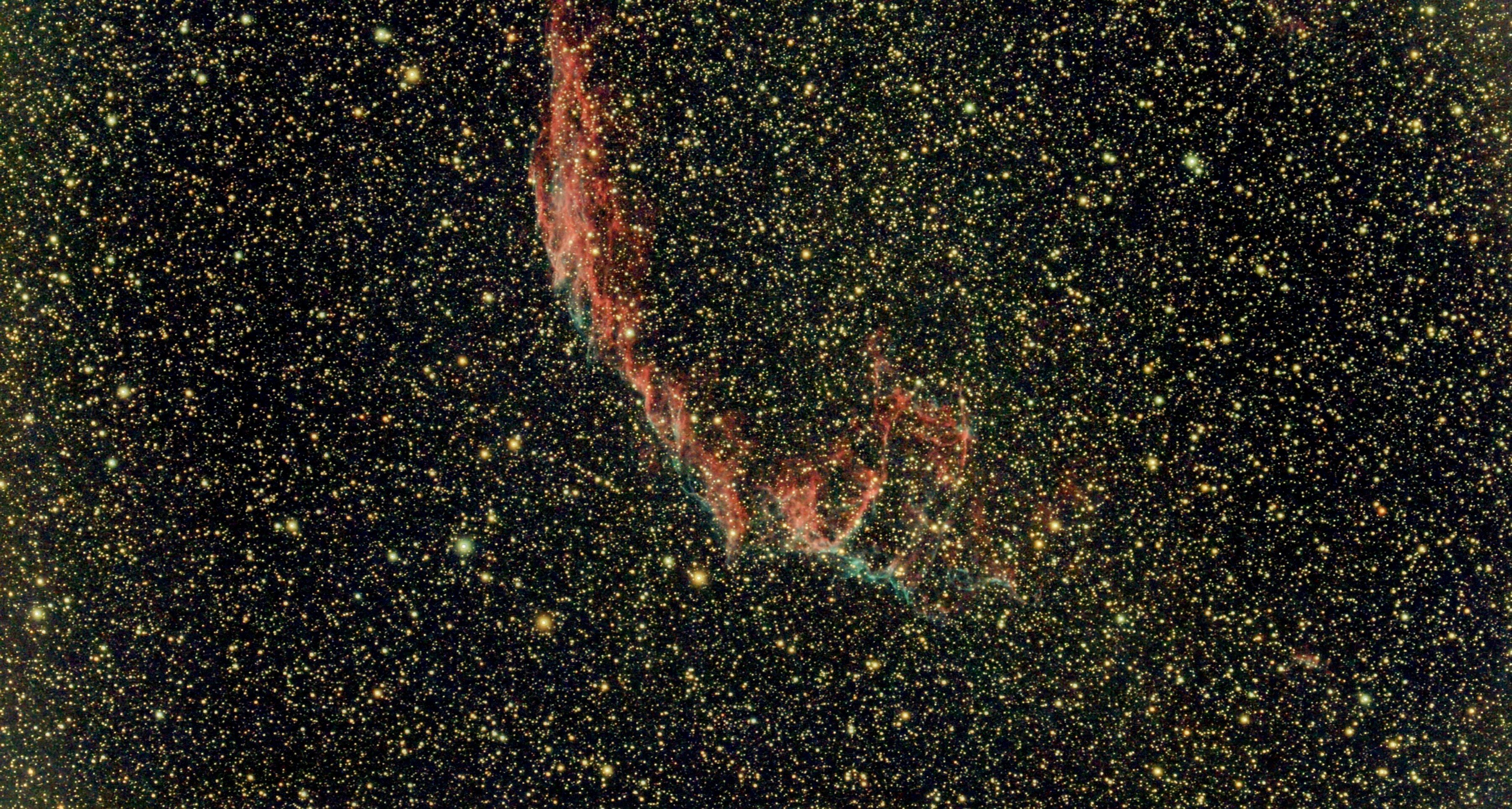I mean in those areas where it just identical houses along a road in huge blocks.
How would you realisyicly solve it?
A mix of bike paths and bus routes
I’m just going to take a moment to bitch even though no one asked.
Here in the US, can we stop just painting bike symbols on the shoulder of 55mph roads and call them “bike lanes”? No, what you’re doing is making a suicide lane. Bike paths need to have bollards protecting them so you don’t get casually manslaughtered by some idiot glancing down at their phone. As it stands, I refuse to use these criminally dangerous excuses for “bike paths”. I know the internet hates when I say this, but I absolutely choose to bike on the sidewalk instead and just go in the grass for a minute if I encounter the rare pedestrian on the same sidewalk. I’m not going to risk my life in such a dumb way. We need to improve these.
I’m the same. I bike where I feel safe, and that’s as far away from cars as possible.
The bike lane has to be proper and safe, or it’s worse than nothing. It’s just a thing that officials can point to and say they did the thing, when in fact they did not do the thing.
Thanks man, I agree.
Sometimes the hive mind likes to downvote and ridicule me over it because “tHe sIDeWalK iS OnLY fOr pEDeStRiaNS”. Like no shit I get that. But I’m sorry but I’m not risking my life over something so needlessly dangerous.
The problem I have with bikes on sidewalks is not when I’m walking, I have yet to encounter any who tried to run me over, even motorized. It’s when driving, if the bike doesn’t stop at every intersection to check for cars turning, and moves faster than a pedestrian it’s just so dangerous. In the road at least the cars know you are there, you are the far right lane.
But the bike lanes here (most of them) are really awful too. I feel like they need train gates, those arms that come down, at intersections to prevent cars from turning while the bike has right of way crossing the intersection.
We have interurban trails here that connect suburbs to downtown and with the proliferation of e-bikes, there are so many people traveling that way now. I’m a little too far away to be connected to it but my hope is that the approach expands.
That sounds awesome. I hope that approach spreads too
Bus stops on the main road(s), placed so everyone has a stop within a 15-20 minute walk.
Sort of agree with others suggesting getting rid of the neighborhoods in the first place, but sharing walls is hell. When the only way to speak confidentially in your own home is to whisper, it’s impossible to wfh or have a telehealth appointment (or, worse, a teletherapy appointment).
That sounds more like a old/cheap construction problem than a shared walls problem. I live in an apartment with solid concrete walls built in the 80s and I never hear my neighbours unless they are full-on screaming, which I’ve only heard happen once.
15-20 min is too far, if it is going to have any impact, the distance to the closest bus stop can’t be any further from houses than 10 min.
Don’t build your houses out of cardboard then
I’m confused. When I lived in apartments, I never built them myself. Can you explain how one builds one’s apartment?
It’s the housing market in general, it’s too often cheap crap
As a Strong Towns article pointed out, solving the problem with cars is not the number of people that drive, but the number of people that drive × the average miles that each person drives.
We can reduce the number of miles that the average person drives without taking away anybody’s car, and make transit more cost-effective by reducing the distance it has to go, by simply putting destinations closer together. Zap the exclusive residential zoning laws. Intermix cafés, shops, restaurants, doctors offices, community centers, and such, with the existing neighborhoods. These things are all quiet, and low-impact, barely noticeable among houses, if they don’t need giant parking lots.
Zoning laws are so bizarre. I remember encountering them for the first time many years ago trying to play SimCity and being confounded by what felt by wholly arbitrary game rules. They genuinely accomplish nothing at all, so why have them?
It’s not that they accomplish nothing at all, but what they accomplished was evil. From my studies and reading1, I think that zoning law started out with good intentions to keep noxious industry (tanneries, blacksmith shops, livestock, etc.) away from dwelling places. Like so many things in the United States, though, it quickly got co-opted for racism.2 The Supreme Court issued a decision barring housing discrimination, so the Federal, state, and local governments turned to zoning laws to keep Black people out of white neighborhoods by, e.g. mandating minimum lot sizes, and construction methods, that priced suburban houses out of reach for Black families. Nowadays, we have this pervasive myth that such restrictions were to foster a rural aesthetic, for environmental preservation, or the result of auto industry lobbying, and those probably contributed, but the root of it was segregation. This becomes clear when you learn about what happened when some Black families succeeded financially anyway, and tried to move into white neighborhoods, like the Cicero, IL race riot of 1951.
- Zoned in the USA by Sonia Hirt is a dry, but good read for a super-nerd, as it compares Euclidean zoning in the U.S. to land-use laws in Europe.
- The Color of Law: A Forgotten History of How Our Government Segregated America by Richard Rothstein blew my mind with evidence of just how deliberate and explicit it was.
You could have a bus route along the major street, bus stops every kilometer and a bus coming every 20 minutes.
That’ll take you to the city center or to a junction where you can jump on another bus taking you in a different direction.
Maybe make it cheap, and gasoline and taxes on cars more expensive so people are incentivised to use it.
Realistically, the easiest way is to rezone some of those areas to retail and office space, and to encourage high density construction.
Rezoning some of those buildings to low density retail and office space will reduce total traffic by allowing some people to have shorter commutes, instead of everyone jamming every highway out of town every day.
And as those buildings age and become more expensive, small sections of them can be knocked down and replaced with higher density buildings, as property values rise. Eventually the whole area with high and medium density, simply because that is what makes sense.
You can also establish commuter rail, where maybe there’s only a couple of stops, but they all go to wherever the jobs are. That will help ease congestion while property values rise enough for higher density development to make sense.
Those neighborhoods only exist because of cars. Fix transit in the cities and stop subsidizing automobiles and those suburban tracts will empty out.
It kinda depends on what you mean by “solved”. You could have a bus route stop at every person house. This would be expensive, frequency would be abysmal, and the routes would take forever and no one would use it.
This issue is that public transit thrives in areas with more density. Get rid of the density public transit ceases to exist.
A more realistic solution for most people would be to try and set up a bike network throughout the neighborhood. Biking, especially e-biking, is mode of transit that can be implemented almost anywhere in a city and have some big benefits to the citizens.
Get rid of cars and their awful infrastructure and density can comfortably go up.
Dedicated bus lanes can have multiple times the capacity in terms of moving people compared lanes that allow cars. Say you got a six lane road in the suburbs, convert the center lanes in each direction to dedicated bus lanes, then have a small median/curb separating the bus and car lanes on both sides. This will make buses faster than cars because of the lower congestion and incentive people to use them, making car congestion go down as well, because people who would otherwise drive are now on the bus.
City Nerd has a great channel focusing on stuff like this on YouTube and Nebula
With the side benefit of providing a fast lane that emergency services can make great use of
Put a bus depot at the entrance, allow only bicycles inside each suburban loop or whatever.
But in the bigger picture, convince people that they don’t want the suburban home. That’s a really hard sell after a few generations of idealizing the identical homes in huge blocks just outside the city.
But once voters don’t want to live there, rezone it to allow denser living or put a factory there to chase out the remaining homeowners or completely level it and farm the land… Or allow businesses to set up within the neighborhood so that everything is within walking/biking distance?
Depends if there is a city center people commute to. If so, park and ride lots, which means putting parking lots at an express bus or train station that goes from the suburb to the city center.
I think the problem, at least in the area I live in, is that people who live in those places want to drive to work. In their cars. And transportation is a county function, not city. So they starve the transportation budget, it’s a vicious cycle.
Those house farms are a plague.
Maglev tubes everywhere. We must start tunneling.
No, just no.
You don’t need maglev for local public transport, you don’t even need them for high-speed long distance trains.
It is also way too expensive for a local system like this
You’re wrong. Maglev is the future.
Mini maglev. Little tubes.
Here’s the proof of concept. See how the tubes connect all the areas?
https://img-us.aosomcdn.com/thumbnail/100/n0/product/2022/07/28/Ye798a18243e76711.jpg
For real though, this sort of tunnel: https://emap-romulus-prod.s3.eu-west-1.amazonaws.com/wp-content/uploads/sites/9/2014/06/Green-Lane-sewer-TBM-naming-competition_143111-1024x683.jpg
Just big enough to fit in and blast around.
Ok, let me go through what I believe is the realistic way putting in local public transport in the suburban neighbourhoods in the US.
You first need a good bus network, every house should be with in a 10 min walk of a bus stop.
The local government then buys a few houses and plots of land, and build a metro station on them and runs a normal boring metro system under ground to either an existing metro system, or start building a metro system.
If you really want maglev you can allways install it later when the tech is mature enough.
As for the size of the tunnels, the sewer TBM you posted is way too small, there would be no space to place signals or other supporting infrastructure, it also severely limits the future tech that can be used on the sytem.
Little maglev pods, man. One seater (stander? layer?). They can string together in a train or go off individually. Switching stations no wider than three or four lanes, underground. You plug in your destination and hop in. Tubes small enough that they can also extend above ground and integrate into other transport. Would probably make people too claustrophobic to ever catch on though. If the feds could be like "yeah it’s small, but we’ll dig a tunnel right to your road and you can blast around safely in basically a straight line to wherever you want to go in a tiny fraction of the time driving would take, it would catch on.
Yeah your idea works, too. The last mile is the hard part. I agree we need a ten minute walk to a bus to make them useful. In America I don’t know how that would be realistic for most places. I feel like most of America landwise, you’re lucky if its a ten minute walk to the next house. So unless the busses are going up and down every road, that means at a minimum need an ebike maybe, but more likely just a car.
In my maglev solution, which I am making up as I go along, the switching and intersections and other key infrastructure for my maglevs are in large, modular blocks that get buried in a giant rectangle hole, maybe the size of a kids football field, and then we build a park and station right on top of it. The tubes can then go basically anywhere, connecting the modular blocks together. The roads are antiquated. The future of travel is sub terranean. Hopefully we don’t also have to live down there.
PRT is an even worse idea, it has never worked outside of some special conditions.
What is bad about a normal metro system?
I think it should be expanded and invested with bus-only highways, more routes, more stops, in places where that makes sense.
I am having trouble articulating it. Something about game theory and how mass transit gets increasingly inefficient the closer it gets to an individual’s destination. And I just happen to think it’s that last connection that, if it could be done efficiently, would really change up mass transit in America. It’s fucked what happened to all the electric trolly ways and trams, and the railways, too. The rail trails everywhere are cool but now we have no trains. With my tubes, we get to keep the rail trails and can tube along right underneath them. I like PRT. And tubes.
While PRT is a fun concept to imagine, in reality it has a few of issues.
Low capacity, even if you were to run your pods together like trains, the capacity would still be far below that of even a bus, this is due to the limited seating in the pods and the required headway between the pods.
Security, a PRT pod is basically a movable locked room with a few seats in it, a young woman or child would be very vulnarable if they were alone with a sexual predator in the pod for a long ride. The dangers are not limited to women and children, but everyone is more vulnerable alone in a PRT pod with a stranger than on a bus with more strangers.
Manufacturer lock in, there are no general standards for PRT systems, meaning that any PRT system built will be locked in with a specific manufacturer, everything from track gauge and rail profile to signaling and control systems, to pods and security systems will need to be supplied by a single company, and it will be extremely hard to get another manufacturer to even agree to make replacements, let alone accomplish that. Busses and trains have standards to follow, but even if you have an odd track gauge or rail profile there are manufacturers who can deal with it, so you can get equipment from other manufacturers and be able to keep costs somewhat in check.
Network of buses/trams and trains. Trains to get in and out of the neighborhood and connect to the city and other neighborhoods, and buses within communities to get around and to/from the train stations. Like a bus stop on every or every other block, then one or two train stations on every neighborhood.
Yeah, this sounds decently realistic
It’s a reality in many countries already
Cars. Cars are great and electric ones don’t make road smog.
Each person being able to go wherever they want whenever they want is a good thing.
Whimsy is a sign of a society operating correctly.
Electric cars are still cars, and come with all of the negative externalities of ICE cars, but for the tailpipe emissions: Danger, noise, particulate pollution, social isolation, and infrastructure costs.
The last one is a big problem. Everybody wants to drive anywhere they want whenever they want, but they don’t want to pay for it. Lots of people believe cockamamie stories about how politicians pocket all of their tax money instead of fixing the roads. But no, roads are stupid expensive, and paying for them is driving most cities into insolvency.
They’re still noisy, most of the sound while driving comes from the wheels, not the engine
The thing is, car drivers should support public transport as much as possible, public transport is the best way to reduce traffic, reducing traffic jams, and giving more freedom to both drivers and public transport users.
Just a couple small buses with cheap fares. That way you can be anywhere in town quick and cheap. One of the places you could go is a train station? Or stop for bigger busses?
deleted by creator






